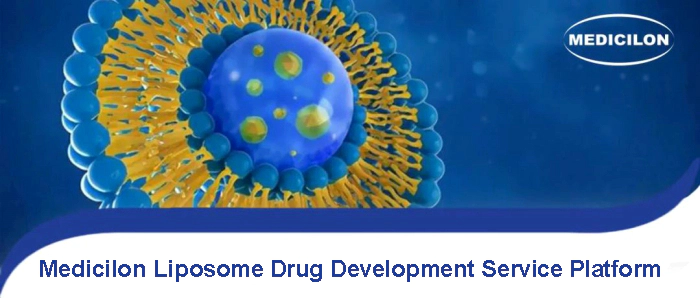 Liposomes, as microscopic vesicles composed of a phospholipid bilayer, have garnered significant attention since their introduction in the 1960s due to their unique drug delivery characteristics. Liposomal drugs, with their distinct advantages such as improving drug solubility, enhancing drug stability, and increasing drug targeting capabilities, demonstrate enormous potential for development in the pharmaceutical field.
Liposomes, as microscopic vesicles composed of a phospholipid bilayer, have garnered significant attention since their introduction in the 1960s due to their unique drug delivery characteristics. Liposomal drugs, with their distinct advantages such as improving drug solubility, enhancing drug stability, and increasing drug targeting capabilities, demonstrate enormous potential for development in the pharmaceutical field.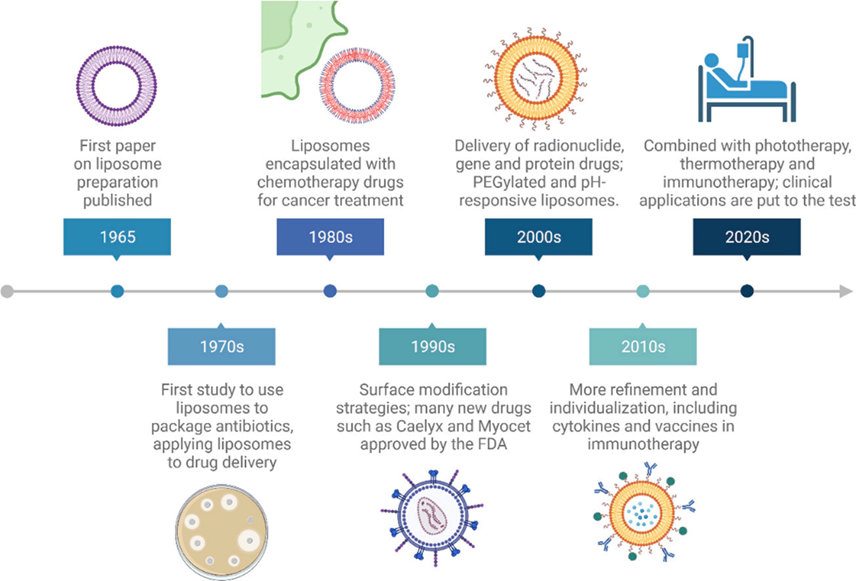 https://doi.org/10.1016/j.ejps.2023.106688
https://doi.org/10.1016/j.ejps.2023.106688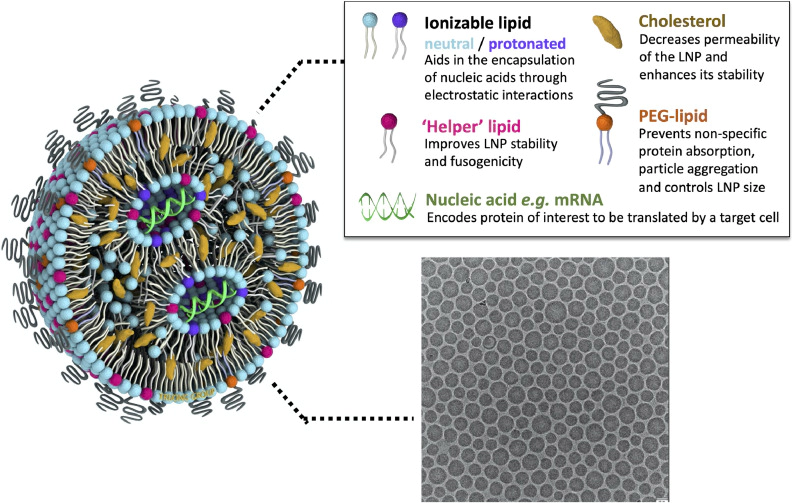 https://doi.org/10.1016/j.ejps.2023.106688
https://doi.org/10.1016/j.ejps.2023.106688
 Liposome Separation and Preparation
Liposome Separation and PreparationPreparation and Analysis of Liquid Phase System
Equipped with an advanced Thermo U3000-CAD detection system, which offers high sensitivity Case Study on the Preparation of Liposomal Compounds (Lipids)Liposomal compounds, which lack UV absorption and have strong hydrophobicity, are prepared using the Waters 2545-Qda//UV/ELSD preparative liquid phase system. Mass spectrometry data is combined with DAD/ELSD-guided collection, resulting in post-separation purity exceeding 98%.
Case Study on the Preparation of Liposomal Compounds (Lipids)Liposomal compounds, which lack UV absorption and have strong hydrophobicity, are prepared using the Waters 2545-Qda//UV/ELSD preparative liquid phase system. Mass spectrometry data is combined with DAD/ELSD-guided collection, resulting in post-separation purity exceeding 98%.
 Liposome Nanoparticle Preparation
Liposome Nanoparticle Preparation- Medicilon offers the following preparation methods:
1 Solvent Injection Method
(1) Solvent Injection Method: The solvent injection method is a relatively simple technique for preparing liposomes. Lipid components are dissolved in an organic solvent, and the desired drug is injected into the organic phase at a controlled rate to induce the formation of liposomes. https://doi.org/10.1016/j.heliyon.2022.e09394
https://doi.org/10.1016/j.heliyon.2022.e093942 Thin-Layer Dispersion Method
(2) Thin-Layer Dispersion Method: The thin-layer dispersion method is straightforward and easy to operate. The drug and lipids are dissolved in an organic solvent, which is then removed under reduced pressure using a rotary evaporator, forming a thin lipid film on the container wall. Adding an appropriate aqueous medium hydrates and detaches the lipid film, thereby preparing drug-loaded liposomes.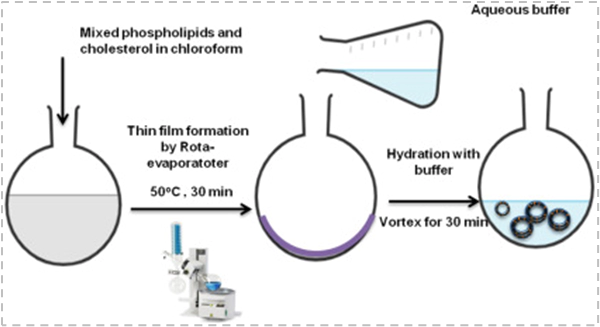 https://doi.org/10.1016/j.heliyon.2022.e09394
https://doi.org/10.1016/j.heliyon.2022.e093943 Reverse-Phase Evaporation Technique
Reverse-Phase Evaporation Technique: This method typically involves ultrasonically forming a water-in-oil (W/O) emulsion by mixing an organic solution of lipids with an aqueous solution of the drug. Subsequent evaporation under reduced pressure yields liposomes. This technique is suitable for water-soluble drugs and large macromolecular active substances.4 Extrusion Method
(4) Extrusion Method: In the extrusion method, liposomes are subjected to external force and squeezed through a filter membrane with pore sizes smaller than their own particle size. The shear force causes deformation and rupture of the liposomes, after which the ruptured bilayers quickly reassemble, forming smaller liposomes.5 Microfluidic Technology
(5) Microfluidic Technology: Microfluidic preparation of liposomes is an efficient and rapid method. This technology precisely controls the flow and mixing of microfluids in microchannels, enabling the high-precision and high-uniformity production of liposomes.Medicilon Liposome Preparation and Analysis Equipment
Medicilon's equipment system comprehensively covers the entire development process of liposomal drugs, from formulation screening and preparation process optimization to detailed performance analysis and quality control, aiming to meet client needs as thoroughly as possible.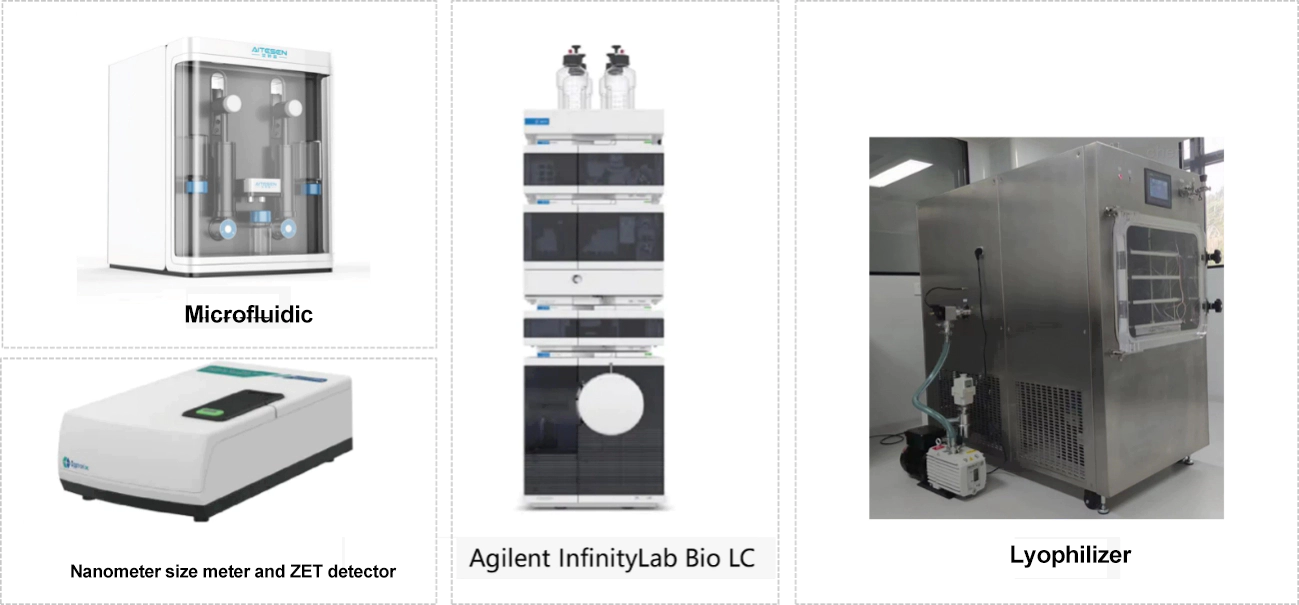
 Liposome Drug Quality Research
Liposome Drug Quality Research- Medicilon offers the following professional services:
1. Quality control of structural or functional components in liposomal drugs
2. Quality research and control of liposomal drugs
(1) Identification, content determination, and examination of lipid-related degradation products
(2) Particle size and distribution, encapsulation efficiency, surface charge, in vitro drug release and drug leakage; structure and morphology, thermodynamic properties of lipid membranes, encapsulation volume, and the state of encapsulated drugs
(3) Others: pH, lipid-to-drug ratio of liposomal drugs, viscosity, sterility, pyrogens/bacterial endotoxins3. Quality standards for liposomal drugs:
(1) Characteristics
(2) Identification (API, structural or functional components, including lipids and non-lipids)
(3) Examination (pH, osmotic pressure molar concentration, surface charge, particle size and distribution, turbidity, encapsulation efficiency, in vitro release rate, related substances, lipid-related degradation products, dosage, residual solvents, visible particles, insoluble particles, sterility, bacterial endotoxins)
(4) Content (API, structural or functional components, including lipids and non-lipids)4. Stability studies of liposomal drugs:
(1) Characteristics
(2) Examination (pH, osmotic pressure molar concentration, surface charge, particle size and distribution, turbidity, encapsulation efficiency, in vitro release rate, related substances, lipid-related degradation products, visible particles, insoluble particles, sterility, bacterial endotoxins)
(3) Content (API, structural or functional components, including lipids and non-lipids)Case Study: Development of Brain-Targeted LiposomesMedicilon has teamed up with the University of Southern California (USC) to develop a brain-targeted liposomal drug delivery system. This collaboration combines Medicilon's extensive expertise in drug formulation development with USC's exceptional research capabilities in neuroscience. The joint effort aims to tackle a significant challenge in drug delivery - how to effectively cross the blood-brain barrier (BBB) to achieve precise treatment for central nervous system disorders such as Alzheimer's disease, Parkinson's disease, and brain tumors.
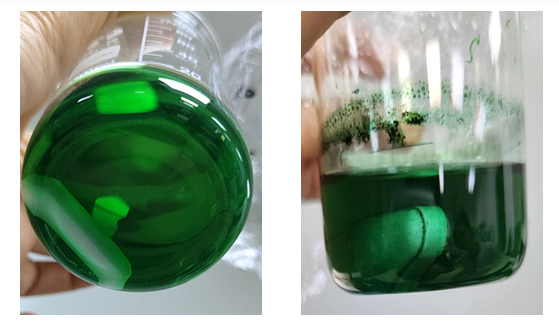 Liposomal-encapsulated drug (left) and control (right)
Liposomal-encapsulated drug (left) and control (right)
 Non-Clinical Safety Evaluation of Liposomal Drugs (Nanomedicines)
Non-Clinical Safety Evaluation of Liposomal Drugs (Nanomedicines)- Nanomedicines may achieve high selectivity in specific organs, tissues, cells, and intracellular structures within the body through passive targeting, active targeting, physical targeting, and chemical targeting. This can alter the pharmacokinetic characteristics of the original drug, such as tissue distribution, thereby impacting its safety and efficacy.
1. Test System:
In vitro tests can be conducted first for early screening and preliminary safety risk assessment, such as studies on cellular uptake, interactions, and complement activation. Species sensitive to toxicity should be selected.2. Test Substance:
Information regarding the production process, key quality attributes, and formulation should be provided, such as stability (chemical and physical stability of the drug and carrier), dispersant/dispersing method, nanomaterial properties (particle size, size distribution, specific surface area, surface charge, surface ligands, etc.), surface characteristics (coating and thickness, ligands and density), drug loading, concentration, solubility, drug release from the carrier, aggregation state of the nanomedicine, and its changes during the process, as well as characterization methods and testing standards. If the nanomedicine needs to be diluted and/or prepared before administration, attention should be given to whether its stability, homogeneity, and drug release rate are altered under different concentrations, solvents, in vitro cell culture media, or other in vitro testing systems after preparation.3. Study Design:
Dosage: In addition to using traditional mass concentration, it may also be useful to provide dose information based on the number of nanoparticles or specific surface area.
Control Groups:For a new active drug component, set up a separate active drug component group. For a new nanocarrier, set up a group with the nanocarrier alone, without the drug.
Testing Time and Frequency: Since clearance in tissues may be slow, set testing time points and frequency according to the accumulation patterns, and extend the recovery period if necessary.4. Toxicity Concerns:
Immunogenicity and Immunotoxicity:Nanomedicines are primarily cleared through phagocytosis by the mononuclear phagocyte system, accumulating in organs and tissues like the liver, spleen, and lymphatic tissues. They may adsorb various biomolecules (mainly proteins) to form a biomolecular layer (such as a protein corona), which can be recognized by receptors on the surface of immune cells. This can lead to immunogenicity and immunotoxicity and may also cause pseudo-allergic reactions. Risks include immune enhancement, immunosuppression, complement activation, inflammatory responses, allergic reactions, and cytokine release. Refer to ICH S8 for guidance.
Neurotoxicity:Compared to conventional drugs, nanomedicines can more easily cross the blood-brain barrier. Drugs with potential neurotoxic risks should undergo safety pharmacology studies to assess their effects on the nervous system.
Genotoxicity:Nanomedicines containing new active pharmaceutical ingredients and new nanocarriers/excipients need to undergo genotoxicity evaluations.
Reproductive Toxicity:Nanomedicines may easily cross biological barriers such as the placental barrier, blood-testis barrier, and blood-milk barrier. Therefore, attention should be paid to reproductive toxicity risks. Refer to ICH S5 for guidance.
Carcinogenicity:Refer to ICH S1 (necessary for long-term use).
Formulation Safety: As required for injectable formulations, attention should be given to in vitro hemolysis tests. If nanomedicines tend to aggregate in solution, it is recommended to conduct in vivo hemolysis tests.
Toxicokinetics:Some nanomedicines may remain in tissues for extended periods, with tissue exposure levels higher than systemic exposure levels. Accumulation in certain tissues and organs can occur, and repeated administration may lead to significant toxic reactions.5 Special considerations for different routes of administration:
Transdermal Administration: Nanomedicines may exhibit higher follicular penetration or distribution to local lymph nodes. Toxicity testing should consider different skin conditions (intact, damaged, diseased) and factors such as light exposure, examining differences in local and systemic exposure levels and associated toxicity risks.
Subcutaneous Administration:Nanomedicines may have a higher sensitization potential. Attention should be paid to the accumulation and migration of insoluble nanomedicines in subcutaneous tissues and related toxicity risks.
Nasal Administration:More favorable for drug absorption compared to gastric mucosa, and may cross the blood-brain barrier via the olfactory nerve pathway.
Inhalation Administration: Nanomedicines can be widely distributed on the alveolar surface, so local and respiratory toxicity should be monitored. The accumulation and migration of insoluble nanocarriers in the lungs should also be a focus.
Intravenous Administration:Nanomedicines may exhibit different tissue distribution and half-life compared to conventional drugs.
Oral Administration:Insoluble nanomaterials may accumulate in certain tissues.Medicilon can provide non-clinical safety evaluations for nanomedicines administered through various routes, including general toxicity studies, pharmacokinetic/toxicokinetic studies, immunogenicity/immunotoxicity assessments, formulation safety studies, genetic/reproductive toxicity studies, and carcinogenicity studies, all in compliance with NMPA and FDA regulatory filing requirements.
 Pharmacokinetic Study of Liposomal Drugs
Pharmacokinetic Study of Liposomal Drugs- Through pharmacokinetic studies, Medicilon can accurately assess the absorption, distribution, metabolism, and excretion (ADME) processes of liposomal drugs in the body, providing scientific evidence for drug optimization.For carrier-based nanomedicines, it is necessary to separately measure the concentrations of free drugs and carrier-bound drugs (total drugs) in the blood.Certain carrier-based nanomedicines (such as PEGylated ones) can induce an immune response after intravenous injection. Repeated administration may lead to accelerated clearance and increased accumulation in tissues such as the liver and spleen, a phenomenon known as Accelerated Blood Clearance (ABC). It is recommended to investigate whether the ABC phenomenon (such as anti-PEG antibodies) occurs during multiple dosing experiments with these carrier-based nanomedicines.
1 Distribution:
The distribution of nanomedicines in tissues and organs depends on the physicochemical properties of the drug-loaded particles themselves, as well as their surface characteristics. Additionally, it is influenced by factors such as protein binding in the blood, tissue and organ hemodynamics, and vascular morphology (such as pore size). Drug-loaded particles serve as transport vehicles and reservoirs for the drug, with the free drug in the target site/target tissue (such as tumor tissue) being the material basis for therapeutic efficacy. On the other hand, free drugs, drug-loaded particles, and carrier materials in other tissues may be the material basis for toxicity or adverse reactions.Therefore, studies on the distribution of total drugs in different tissues should be conducted. If feasible, it is recommended to separately measure free drugs and carrier-bound drugs in target organs and potential toxic organs. For polymer carrier materials that degrade slowly or have significant ability to penetrate physiological barriers, distribution studies of total carrier materials in different tissues are recommended. Additionally, it is encouraged to conduct kinetic studies on the distribution of total particles and drug release in different tissues.2 Metabolism:
The active drugs in carrier-based nanomedicines and their dissociated carrier materials are primarily metabolized by enzymes in the liver and other tissues. Additionally, drug-loaded particles are easily phagocytized by the mononuclear phagocyte system (MPS), where they are degraded or metabolized in lysosomes, which may affect the types and quantities of drug and carrier material metabolites/degradation products. Therefore, it is essential to determine the primary metabolic/degradation pathways of the active drug and carrier materials and to analyze their metabolic/degradation products.3 Excretion:
The active drugs and carrier materials in carrier-based nanomedicines may be excreted through glomerular filtration and tubular secretion into the urine or through the liver in the form of bile secretion into feces. Drug-loaded particles themselves are generally not easily excreted directly via these pathways and must dissociate into carrier materials or be degraded before primarily being excreted through the kidneys. Therefore, it is necessary to determine the excretion routes, excretion rates, and mass balance of the active drug after administration. Additionally, due to the special nature of carrier materials, it is recommended to conduct excretion studies based on the specific characteristics of the carrier materials.Medicilon Liposomal Drug Case StudyIndications Tumor Route of Administration Intravenous Injection R&D Objectives 1. Enhance drug efficacy and reduce dosage. 2. Decrease toxic reactions. Control Groups Solvent control, Blank liposome control, Standard injection solution (non-liposomal) control Dosage Based on the toxicity of standard injection solutions and preliminary experimental design, the high dosage of the liposomal formulation is the same as that of the standard injection solution. Rat Pharmacokinetics (PK): At the same dosage, compared to the standard injection solution, the plasma exposure of free drug in the liposome group shows a reduced Cmax, but a higher AUC (0-144h). This indicates that the liposome-encapsulated drug has a certain sustained-release effect.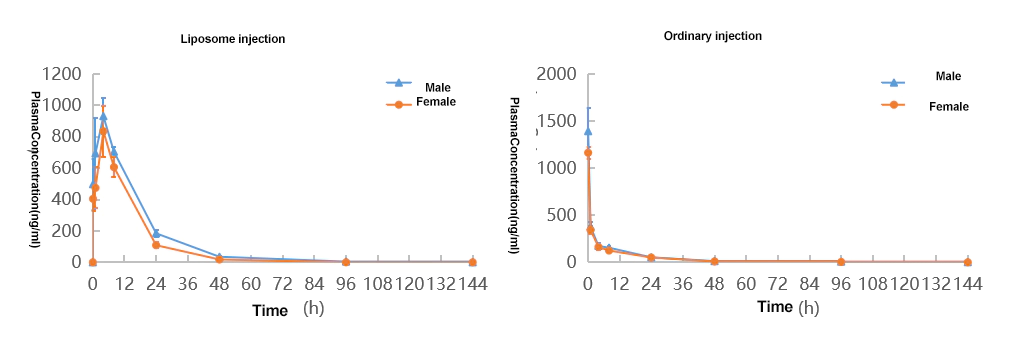 Tumor-Bearing Mouse Tissue Distribution: At the same dosage, the drug accumulation in tumor tissue is higher with liposomes compared to the standard injection solution, allowing for better therapeutic efficacy.
Tumor-Bearing Mouse Tissue Distribution: At the same dosage, the drug accumulation in tumor tissue is higher with liposomes compared to the standard injection solution, allowing for better therapeutic efficacy.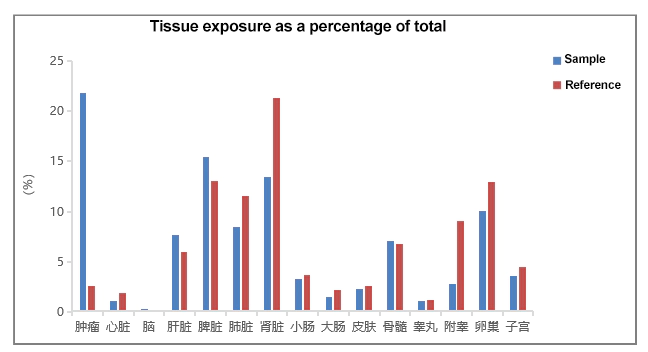
 Bioanalysis of Liposomal Drugs
Bioanalysis of Liposomal Drugs- The platform utilizes advanced biological analysis techniques to perform precise quantitative analysis of liposomal drugs, providing strong support for drug development.Services Offered:Conduct pharmacokinetic (PK) and toxicokinetic (TK) sample biological analysis.
Provide comprehensive support for biological analysis from early screening through preclinical and clinical stages.1. Biological Analysis Method Development and Validation
(1) Liposomal Target Analytes
Guidelines specify that pharmacokinetic studies require the measurement of both carrier-bound (or total drug) and free (completely free + protein-bound) drug concentrations in biological samples.(2) Sample Preparation Techniques
Protein Precipitation (PPT): A separation method that involves disrupting the hydration of protein molecules or weakening the factors of intermolecular repulsion to decrease the solubility of proteins in water, causing them to precipitate and convert to a solid. Common methods include organic reagent precipitation, isoelectric precipitation, and salting out.
Liquid-Liquid Extraction (LLE):Based on the principle of phase compatibility, this technique extracts analytes or unwanted interfering components from one liquid phase (such as a biological sample) to another immiscible liquid phase (such as an organic solvent) for sample cleanup. Common solvents used include n-hexane, methyl tert-butyl ether, n-butanol, and ethyl acetate.
Solid-Phase Extraction (SPE):Similar in mechanism to liquid chromatography, this technique separates analytes based on their affinity or interaction with adsorbent materials (stationary phase) dissolved in a liquid. Common types include reverse-phase SPE and ion-exchange SPE.
Ultrafiltration: A pressure-driven membrane separation technique that allows small molecules and solvents to pass through a membrane with a specific pore size while retaining larger molecules on one side, thus partially purifying the large molecules. Ultrafiltration tubes are commonly used.
Other separation methods include equilibrium dialysis, ultracentrifugation, size exclusion chromatography, and column switching chromatography.Solid-Phase Extraction (SPE)
General Process of Solid-Phase Extraction (SPE):Sample preparation → Activation → Equilibration → Sample Loading → Rinse → Elution2 Biological Matrix Sample Analysis
Measurement in Different Biological Matrices
Guidelines suggest measuring both total drug and free drug concentrations in plasma and tissue samples. However, tissue samples are currently processed using physical homogenization, which inevitably causes the breakage of liposomes. As a result, current technology does not yet allow for the detection of free drug concentrations in tissues.Matrix Total Drug Free Drug Rat Plasma Rat Plasma Need Dog Plasma Need Need Monkey Plasma Need Need Mouse Plasma Need Need Rat Tissue Need Mouse Tissue Need Rat Excretion Need




 marketing@medicilon.com
marketing@medicilon.com











